Wk 3 Apply - Assingment PDF

| Title | Wk 3 Apply - Assingment |
|---|---|
| Author | Adam Lowery |
| Course | Advanced Database Architecture |
| Institution | University of Phoenix |
| Pages | 3 |
| File Size | 51 KB |
| File Type | |
| Total Downloads | 78 |
| Total Views | 198 |
Summary
Assingment...
Description
Wk 3 Apply
1. Improving _____ leads to more flexible queries. a. atomicity 2. Overlapping subtypes are subtypes that contain _____ subsets of the supertype entity set. a. nonunique 3. When a table contains only one candidate key, _____ are considered to be equivalent. a. the 3NF and the BCNF 4. In a real-world environment, we must strike a balance between design integrity and _____. a. flexibility 5. A _____ derives its name from the fact that a collection of multiple entries of the same type can exist for any single key attribute occurrence. a. repeating group 6. Attribute A _____ attribute B if all of the rows in the table that agree in value for attribute A also agree in value for attribute B. a. determines 7. In the context of total completeness, in a(n) _____, every supertype occurrence is a member of at least one subtype. a. overlapping constraint 8. The default comparison condition for the subtype discriminator attribute is the _____ comparison. a. equality 9. BCNF can be violated only if the table contains more than one _____ key. a. candidate 10. The most likely data type for a surrogate key is _____. a. numeric 11. A(n) _____ exists when there are functional dependencies such that Y is functionally dependent on X, Z is functionally dependent on Y, and X is the primary key. a. transitive dependency 12. In a _____ situation, one key determines multiple values of two other attributes and those attributes are independent of each other. a. multivalued dependency 13. One important inheritance characteristic is that all entity subtypes inherit their _____ key attribute from their supertype. a. primary 14. If one exists, a data modeler uses a _____ as the primary key of the entity being modeled. a. natural identifier 15. An example of denormalization is using a _____ denormalized table to hold report data. This is required when creating a tabular report in which the columns represent data that are stored in the table as rows. a. temporary
16. The _____ depicts the arrangement of higher-level entity supertypes (parent entities) and lowerlevel entity subtypes (child entities). a. specialization hierarchy 17. From a structural point of view, 3NF is better than _____. a. 2NF 18. The purpose of an entity _____ is to simplify an entity-relationship diagram (ERD) and thus enhance its readability. a. cluster 19. A specialization hierarchy can have _____ level(s) of supertype/subtype relationships. a. many 20. From a structural point of view, 2NF is better than _____. a. 1NF 21. The "_____" characteristic of a primary key states that the primary key should not have embedded semantic meaning. a. nonintelligent 22. In a(n) _____ diagram, the arrows above the attributes indicate all desirable dependencies. a. dependency 23. At the implementation level, the supertype and its subtype(s) depicted in a specialization hierarchy maintain a(n) _____ relationship. a. 1:1 24. A table that has all key attributes defined, has no repeating groups, and all its attributes are dependent on the primary key is said to be in _____. a. 1NF 25. The most important characteristic of an entity is its _____ key, used to uniquely identify each entity instance. a. primary 26. A _____ is a primary key created by a database designer to simplify the identification of entity instances. a. surrogate key 27. An attribute that is part of a key is known as a(n) _____ attribute. a. prime 28. A table where all attributes are dependent on the primary key but are independent of each other, and no row contains two or more multivalued facts about an entity is said to be in _____. a. 4NF 29. A table is in BCNF if every determinant in the table is a foreign key. a. False 30. _____ is the bottom-up process of identifying a higher-level, more generic entity supertype from lower-level entity subtypes a. Generalization 31. A _____ key is a real-world, generally accepted identifier used to uniquely identify real-world objects. a. natural
32. If a table has multiple candidate keys and one of those candidate keys is a composite key, the table can have _____ based on this composite candidate key even when the primary key chosen is a single attribute. a. partial dependencies 33. Within a specialization hierarchy, every subtype can have _____ supertype(s) to which it is directly related. a. only one 34. A table that is in 2NF and contains no transitive dependencies is said to be in _____. a. 3NF 35. Composite primary keys are particularly useful as identifiers of composite entities, where each primary key combination is allowed only once in the _____ relationship. a. M:N 36. From a system functionality point of view, _____ attribute values can be calculated when they are needed to write reports or invoices. a. derived 37. A table is in 4NF if it is in 3NF, and _____. a. it has no multivalued dependencies 38. _____ databases reflect the ever-growing demand for greater scope and depth in the data on which decision support systems increasingly rely. a. Data warehouse 39. According to the "preferably single-attribute" characteristic of a primary key, the primary key: a. should have the minimum number of attributes possible. 40. Normalization works through a series of stages called normal forms. For most purposes in business database design, _____ stages are as high as you need to go in the normalization process. a. three...
Similar Free PDFs
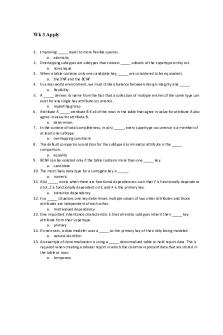
Wk 3 Apply - Assingment
- 3 Pages
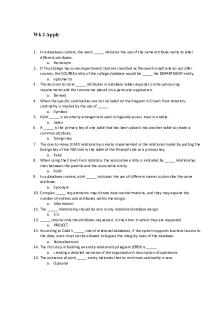
Wk 2 Apply - Assingment
- 3 Pages

WK 3 - wk 3 summary
- 5 Pages

Apply Brief Hypotheticals 3
- 9 Pages

FINAL ASSINGMENT 083
- 3 Pages
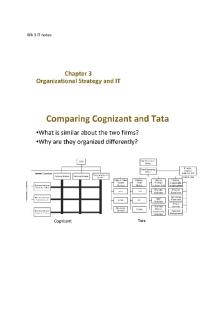
Wk 3 notes MBA 610
- 13 Pages
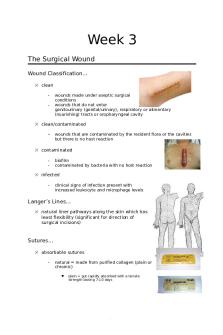
Wound Care Notes Wk 3
- 14 Pages
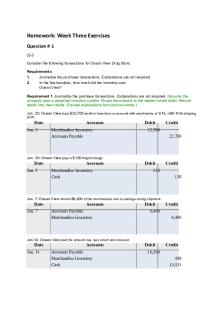
WK 3 Assignment 1 - ggjg
- 29 Pages

Auditing Case 3 Wk 3 - Grade: A+
- 4 Pages
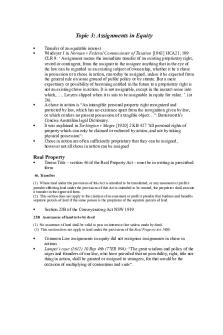
Wk 3 Assignments in Equity
- 6 Pages

Marketing Assingment
- 11 Pages

Apply Brief Hypotheticals 20
- 7 Pages

Mgt assingment - About Petronas
- 15 Pages

Ethics Movie Assingment
- 11 Pages
Popular Institutions
- Tinajero National High School - Annex
- Politeknik Caltex Riau
- Yokohama City University
- SGT University
- University of Al-Qadisiyah
- Divine Word College of Vigan
- Techniek College Rotterdam
- Universidade de Santiago
- Universiti Teknologi MARA Cawangan Johor Kampus Pasir Gudang
- Poltekkes Kemenkes Yogyakarta
- Baguio City National High School
- Colegio san marcos
- preparatoria uno
- Centro de Bachillerato Tecnológico Industrial y de Servicios No. 107
- Dalian Maritime University
- Quang Trung Secondary School
- Colegio Tecnológico en Informática
- Corporación Regional de Educación Superior
- Grupo CEDVA
- Dar Al Uloom University
- Centro de Estudios Preuniversitarios de la Universidad Nacional de Ingeniería
- 上智大学
- Aakash International School, Nuna Majara
- San Felipe Neri Catholic School
- Kang Chiao International School - New Taipei City
- Misamis Occidental National High School
- Institución Educativa Escuela Normal Juan Ladrilleros
- Kolehiyo ng Pantukan
- Batanes State College
- Instituto Continental
- Sekolah Menengah Kejuruan Kesehatan Kaltara (Tarakan)
- Colegio de La Inmaculada Concepcion - Cebu

